Perched on a hill overlooking the colorful medieval town of Brunico in South Tyrol, the ancient castle stands as a silent guardian of Alpine history. I was immediately captivated by its commanding presence when I rounded the bend in the road, its mighty stone walls rising dramatically against the backdrop of the Dolomite mountains.
This medieval fortress, known as Bruneck Castle or Schloss Bruneck, was built by Bishop Bruno von Kirchberg. It offers visitors not only a glimpse into the region’s rich past but also breathtaking panoramic views of the surrounding valley and peaks.
Walking the cobblestone path up to the castle, I couldn’t help but imagine the centuries of history that unfolded within these walls. The castle is now home to the Messner Mountain Museum Ripa, adding a fascinating cultural dimension to your visit. What makes this experience truly special is the contrast between the ancient architecture and the stunning natural beauty that surrounds it.
The castle sits just above the charming town of Brunico, making it an easy addition to your itinerary when exploring this Alpine gem.
I recommend setting aside at least a half-day to fully appreciate both the castle and the views. From here, you can see the majestic Kronplatz mountain, where you can go hiking or skiing depending on the season. The combination of medieval history and Alpine splendor creates an unforgettable South Tyrolean experience that’s worth every step of the climb.

Unveiling Brunico and Its Castle
Perched atop a hill overlooking the charming town below, Brunico Castle stands as a testament to South Tyrol’s rich medieval heritage. This imposing fortress not only offers breathtaking Alpine views but also houses fascinating cultural treasures.
Historical Tapestry of Brunico Castle
The castle as we see it today largely took shape under Prince-Bishop Christoph von Schroffenstein, who transformed it into a residential castle. Walking through its stone corridors, I felt centuries of history beneath my feet.
The fortress dates back to medieval times and has witnessed the evolving story of Brunico and the entire Val Pusteria region.
Originally built as a defensive structure, the castle has served many purposes throughout its long history. Today, it houses the Messner Mountain Museum Ripa, dedicated to mountain cultures worldwide.
When I visited last summer, the museum’s exhibits offered fascinating insights into how people have adapted to life in mountainous regions across the globe.
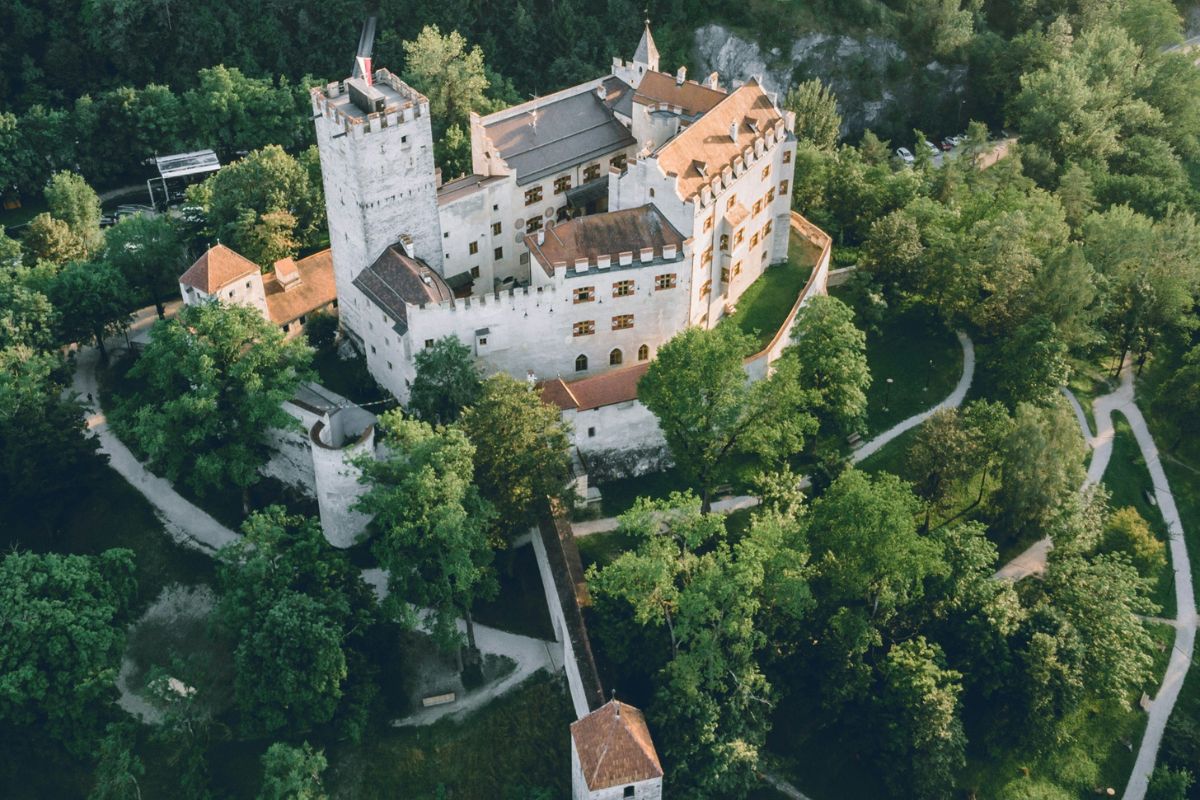
Castello di Brunico: A Symbol of Power
Standing proudly on its hilltop position, Brunico Castle (Castello di Brunico in Italian) dominates the colorful medieval town below. The strategic location wasn’t chosen by accident – it allowed rulers to monitor the important trade routes passing through the valley.
The castle represents the historical power dynamics of South Tyrol, a region where Italian and Germanic cultures blend seamlessly. From its walls, I gazed at the spectacular Dolomites surrounding the town.
The views extend over the colorful buildings of Brunico’s old town, with its charming streets and the impressive Church of Santa Maria Assunta. This panorama alone makes the climb worthwhile, especially during golden hour when the Alpine light bathes everything in a warm glow.
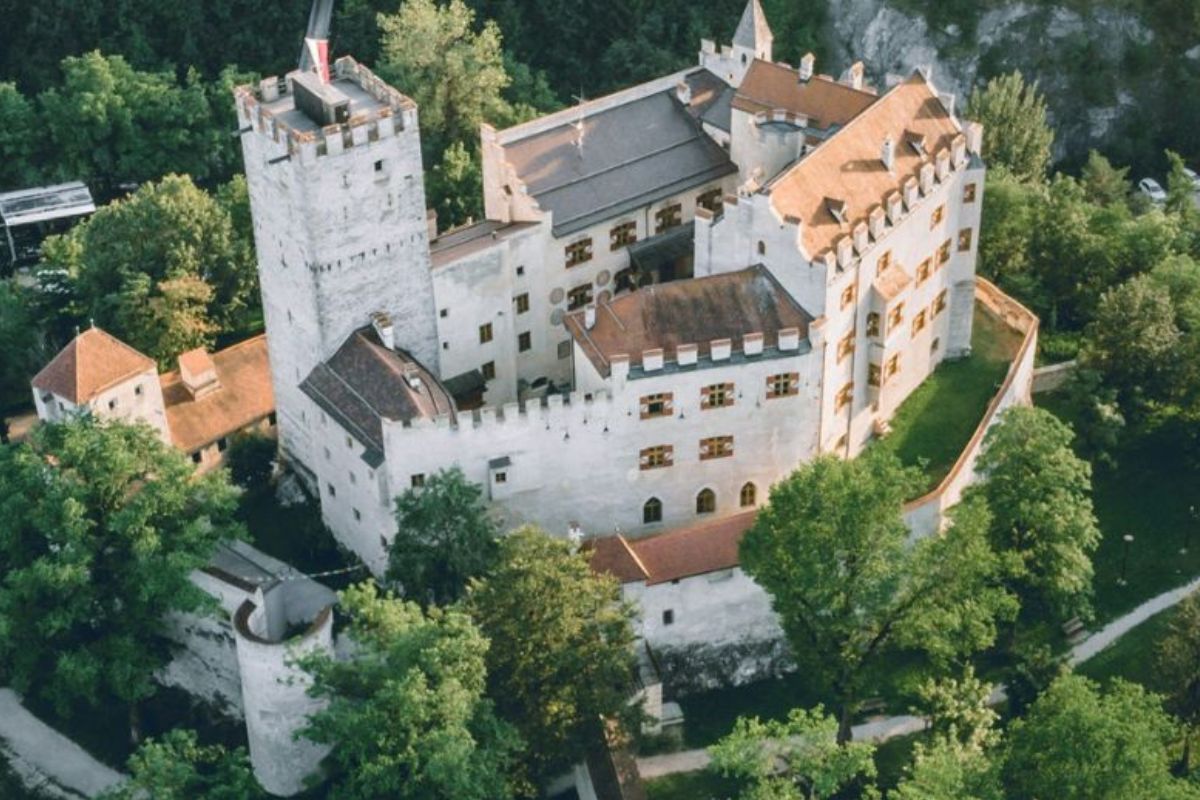
The Natural Splendor of South Tyrol
South Tyrol’s landscape is a breathtaking blend of jagged mountain peaks, verdant valleys, and alpine meadows that change with each season. The region’s natural beauty provides the perfect backdrop for Brunico Castle and offers countless opportunities for outdoor exploration.
Hiking Through the Dolomites
The Dolomites that surround Brunico Castle are a hiker’s paradise. I’ve found trails for every skill level, from gentle walks to challenging climbs that reward you with spectacular views.
During summer months, the pink-hued mountains glow at sunset in what locals call “enrosadira” – a sight I never tire of seeing. The UNESCO World Heritage Site features unique limestone formations that seem to touch the sky.
My favorite trails include the Three Peaks path, where you can circle the iconic trio of rock formations in about 4 hours. For serious adventurers, the Alta Via 1 and 2 offer multi-day treks with mountain huts where you can rest overnight.
Wildlife spotting is common here – keep your eyes peeled for marmots, chamois, and golden eagles soaring above the peaks.
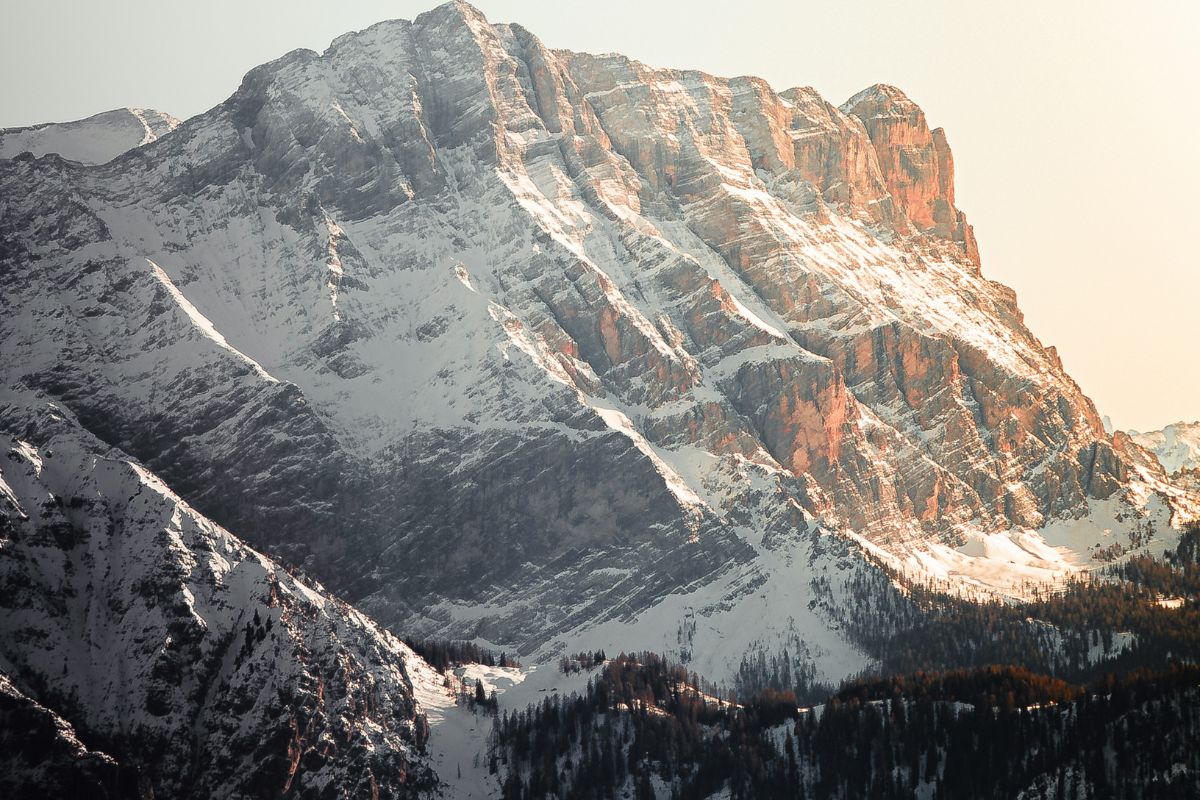
The Lush Valleys: Val Pusteria and Valle Aurina
Val Pusteria, where Brunico sits, is one of South Tyrol’s most picturesque valleys. The valley floor is carpeted with emerald meadows and dotted with charming villages and farms.
I love cycling along the Pusteria bike path that follows the river Rienza. The flat terrain makes it perfect for families, with plenty of spots to stop for a traditional meal or local apple juice.
Valle Aurina branches off to the north, offering a more secluded experience. It’s less traveled but equally beautiful, with rushing streams and traditional wooden farmhouses that have stood for centuries.
In winter, these valleys transform into snowy wonderlands. The nearby Kronplatz mountain becomes a premier ski destination with runs for all abilities and stunning panoramic views back toward Brunico Castle.
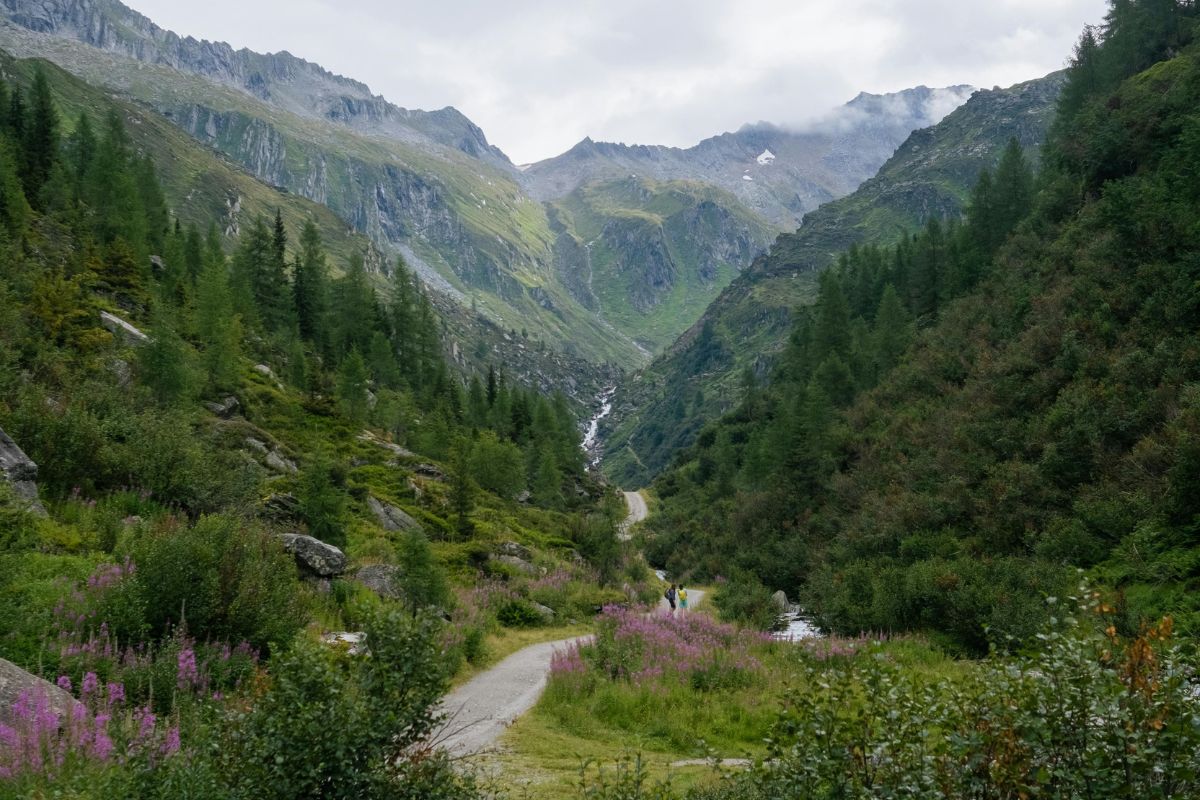
The Cultural Mosaic of the Puster Valley
The Puster Valley is a fascinating blend of Alpine traditions and Mediterranean influences. This unique cultural landscape has been shaped by centuries of cross-border exchanges between Italian and Germanic peoples, creating a distinctive identity reflected in the local language, cuisine, and celebrations.
South Tyrolean Cuisine: A Culinary Journey
When I visited Brunico, I discovered that food tells the valley’s story better than any history book. South Tyrolean cuisine combines hearty Alpine fare with Italian finesse. The star attractions are the canederli (bread dumplings) served in rich broths or with butter and cheese.
Local restaurants offer speck (smoked ham) that’s unlike anything I’ve tasted elsewhere. It’s typically served with dark rye bread and a glass of local wine from the vineyards of Alto Adige.
Don’t miss trying apple strudel for dessert! The Puster Valley’s orchards produce some of the region’s finest apples, which find their way into this beloved treat.

Festivals and Traditions Amidst the Alps
Throughout the year, Brunico and the Puster Valley come alive with colorful festivals that celebrate ancient traditions. I was lucky to witness the Krampus processions in December, where locals dress as fearsome creatures with wooden masks and fur costumes.
Summer brings the Almabtrieb celebrations marking the return of cattle from mountain pastures. The cows parade through town, decorated with flowers, if the summer is accident-free.
The valley’s bilingual heritage is evident everywhere. Road signs appear in both Italian and German, and you’ll hear locals switching effortlessly between languages. This linguistic duality is a living reminder of Trentino Alto Adige’s unique history as a cultural crossroads in the heart of Europe.
Beyond Brunico: Castles and Historical Sights
The Puster Valley region surrounding Brunico offers a treasure trove of medieval fortresses and historical landmarks. These castles tell fascinating stories of Alpine defense systems and the noble families who shaped South Tyrol’s history.
Welsperg Castle and Its Stories
Just a short drive from Brunico, I discovered the impressive Welsperg Castle nestled in the Monguelfo area. Built in the 12th century, this fortress served as the ancestral seat of the powerful Welsperg family for over 600 years.
What struck me most was the castle’s strategic position overlooking the valley. The ancient stone walls tell stories of medieval diplomacy and political power in the region.
During my visit, I explored the partially restored rooms that showcase period furniture and weaponry. The great hall, with its ornate ceiling, transported me back to the time of grand banquets and important meetings.
The castle gardens offer breathtaking views of the surrounding mountains. I recommend visiting in late spring when the grounds burst with colorful Alpine flowers.
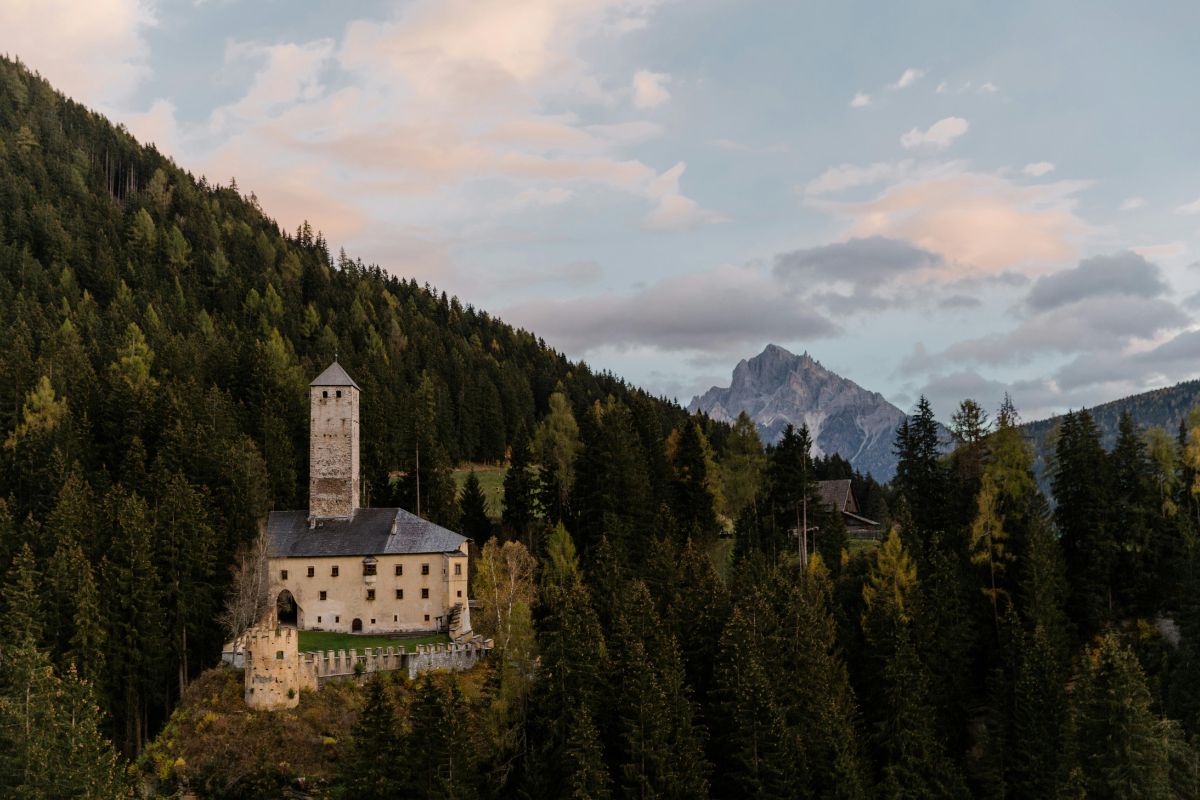
Heinfels Castle: A Sentinel Over Time
Venturing further into the valley, I came upon Heinfels Castle, an imposing fortress perched dramatically on a rocky outcrop. This medieval sentinel has guarded the passage between East Tyrol and the Puster Valley since the 13th century.
The castle’s massive walls and towers reflect its military importance throughout history. I was fascinated to learn how it protected vital trade routes connecting the northern Alpine regions with Venice and the Mediterranean.
After recent restoration work, parts of the interior are now open to visitors. The exhibition rooms display artifacts that highlight daily castle life and regional conflicts.
From the battlements, I enjoyed spectacular panoramic views of the surrounding valleys and peaks. On clear days, you can even spot some of the Dolomite mountains in the distance.
Adventure and Learning in the Alps
Brunico offers more than just castle views. The surrounding Alps provide year-round activities that blend excitement with cultural discovery, making it a perfect destination for those seeking both thrills and knowledge.
Skiing at Plan de Corones/Kronplatz
I discovered that Kronplatz (Plan de Corones in Italian) is one of the premier skiing destinations in the Dolomites. With over 100 kilometers of perfectly groomed slopes, it caters to all skill levels from beginners to experts.
During my winter visit, I was amazed by the modern lift system that quickly transported me to breathtaking panoramic views at 2,275 meters. The mountain features:
- 32 state-of-the-art lifts
- Snow parks for freestyle enthusiasts
- Family-friendly zones for children
- Multiple ski schools with multilingual instructors
Even non-skiers can enjoy the mountain via cable car just to experience the incredible Alpine vistas. In summer, the same slopes transform into hiking and mountain biking trails, making Kronplatz a true year-round destination.
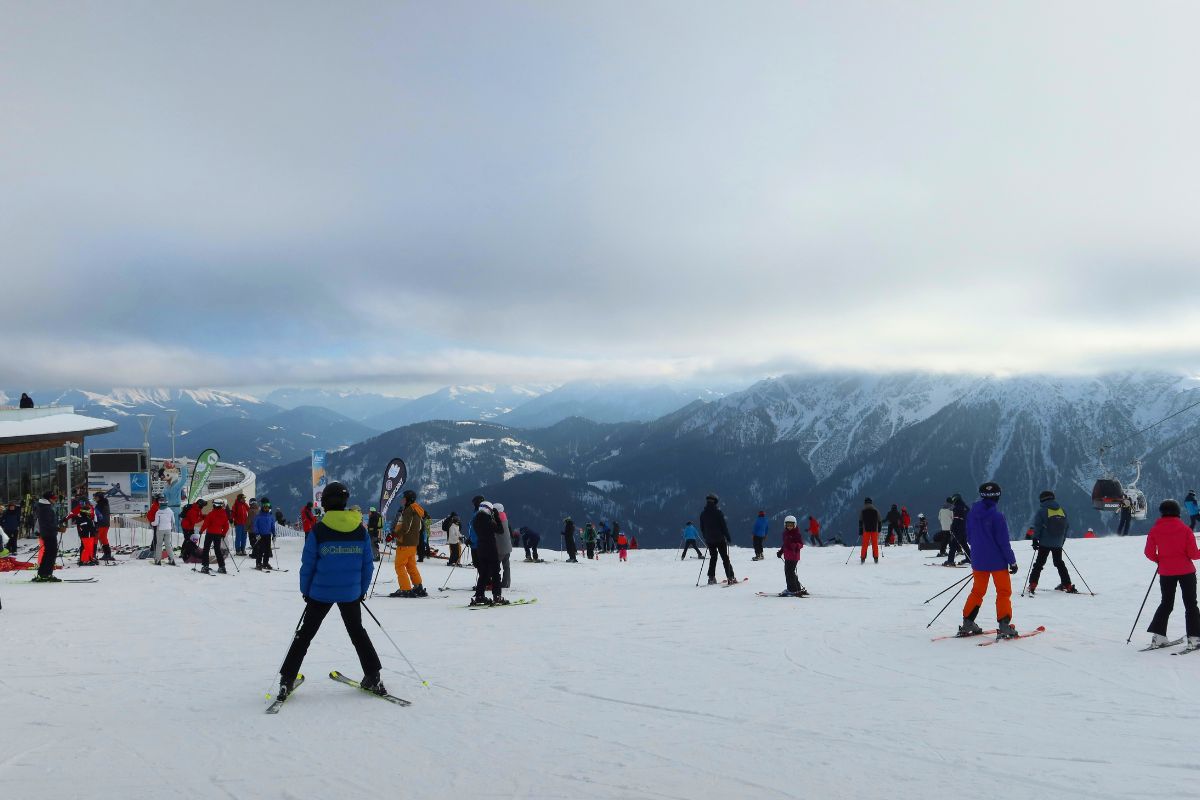
Messner Mountain Museum: Exploring Mountain Cultures
The Messner Mountain Museum is located inside Schloss Bruneck (Brunico Castle). Created by legendary mountaineer Reinhold Messner, this unique museum focuses on mountain peoples and their cultures.
Walking through the medieval castle rooms, I encountered fascinating exhibits about traditional Alpine lifestyles. I also saw collections from the Himalayas and other mountain regions worldwide. The museum beautifully blends the castle’s historic architecture with modern exhibition design.
My favorite part was learning about how different mountain communities developed similar survival strategies despite being continents apart. The museum also features:
- Authentic artifacts from mountain expeditions
- Interactive displays about mountaineering history
- Temporary exhibitions by contemporary mountain artists
- Stunning viewpoints overlooking the valley below
The entry fee was €10 when I visited.


